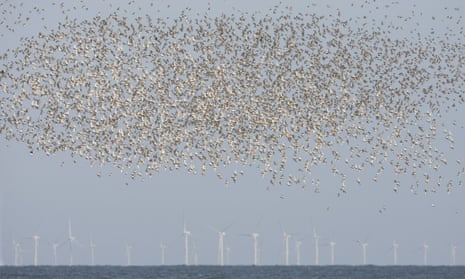Research by the British Trust for Ornithology and the University of the Highlands and Islands in Scotland, published this week, found most gannets would avoid even entering a wind farm area, while gulls do enter the area but then avoid flying near the spinning blades.
The study, which was carried out on behalf of the Scottish government, suggested more than 99% of seabirds would change direction to avoid colliding with wind farms, although a small proportion would not.
Aonghais Cook, a researcher for BTO, said more work was needed, however, to understand the impact on other kinds of birds, such as northern gannets, and he urged developers and planning inspectors to still show caution when assessing the wildlife risks associated with new projects.
“It is important not to get lulled into a false sense of security by these figures,” he said. “While 99% of birds may avoid turbines, collision may still be a significant risk at sites with large numbers of birds. Furthermore, there are still a number of key gaps in knowledge for some vulnerable species.”
The report was welcomed by Nick Medic, director of offshore renewables for RenewableUK, who said it showed the vast majority of birds were unaffected by the presence of offshore turbines.
“Developers make every effort to ensure their projects are developed sensitively to avoid flight paths and minimise any potential impact,” said Medic. “Detailed Environmental Impact Assessments are carried out as a matter of course to standards that are, rightly, extremely exacting. We will continue to work with wildlife organisations to ensure we develop the UK’s superb offshore wind resource in a way that protects biodiversity.”
Aedán Smith, head of planning and development at RSPB Scotland, welcomed the report as a major step forward in understanding the impact of offshore wind farms. However, he stressed “major uncertainties” remained for some species.
“The small proportion of flights that result in collision could still result in many thousands of birds being killed each year and could even significantly reduce the total populations of some species,” Smith said.
“It is therefore vital that individual developments avoid the most important places for seabirds. Impacts on seabirds must be reduced significantly if offshore wind is to realise its full potential of delivering much-needed sustainable renewable energy.”
The report follows several other studies into the wildlife impacts of offshore wind farms that have suggested that the foundations can act as artificial reefs, providing habitats for young fish.

Comments (…)
Sign in or create your Guardian account to join the discussion